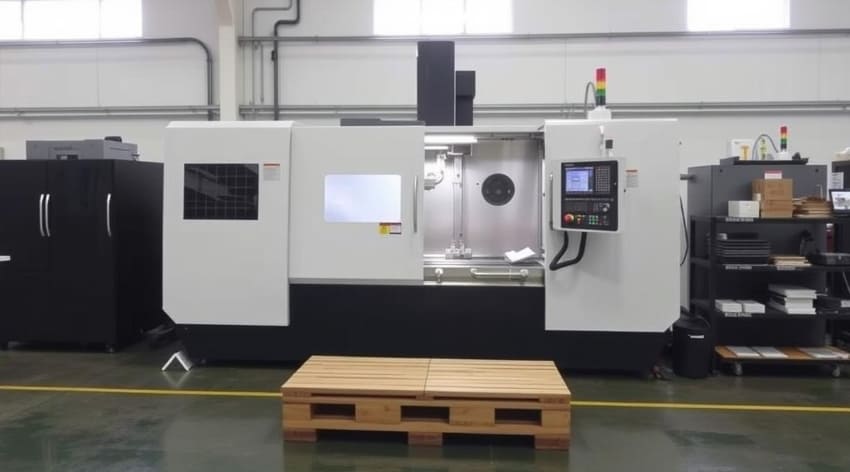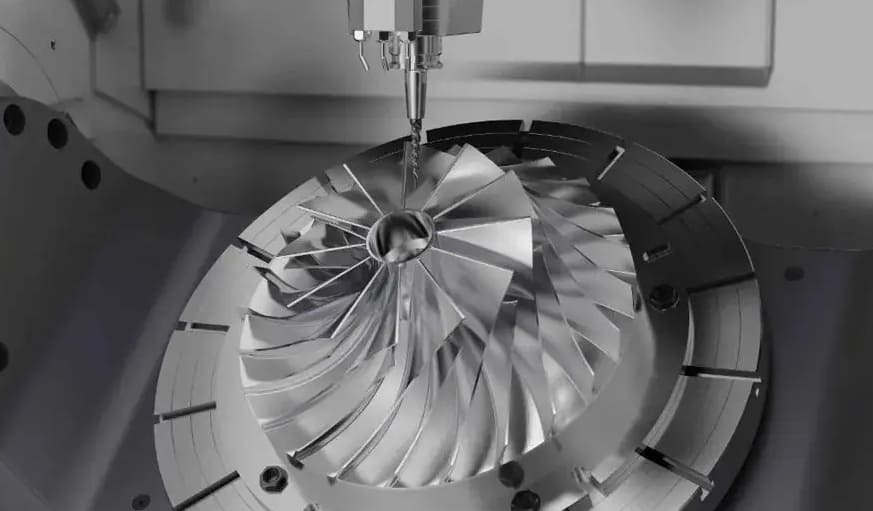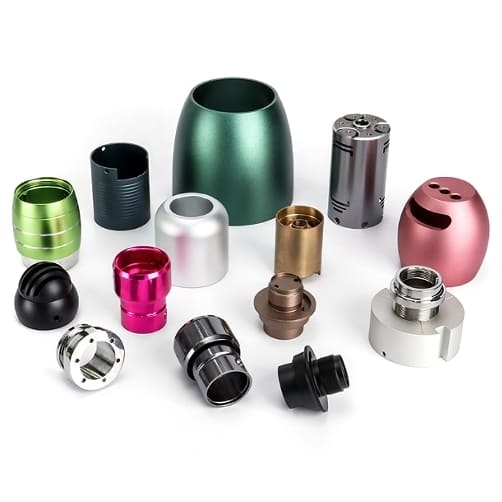
In the world of precision manufacturing, the 5-axis CNC (Computer Numerical Control) machine stands out as a marvel of modern engineering. As someone who has had the privilege of delving deep into the capabilities of these machines, I can confidently say that they are game-changers. But what exactly is a 5-axis CNC machine, and what can it do? Let’s explore the fascinating applications of this technology and how it is transforming industries across the board.
What is a 5-Axis CNC Machine?
Before we dive into the applications, let’s quickly break down what a 5-axis CNC machine is. Essentially, it’s a type of machine tool that can move a part or a tool in five different axes simultaneously. Traditional 3-axis machines move the tool in the X, Y, and Z directions, while 5-axis machines add two more rotational axes, often labeled A and B. This additional movement allows for more complex and precise cuts, which are crucial for intricate parts and components.
Key Features of 5-Axis CNC Machines
- Simultaneous Movement: The ability to move in five axes at the same time ensures that the machine can reach any angle and position on the workpiece.
- High Precision: These machines are incredibly accurate, with tolerances that can be as tight as a few microns.
- Versatility: They can handle a wide range of materials, from metals to composites and plastics.
- Efficiency: By reducing the need for multiple setups, 5-axis machines can save time and improve productivity.
The Benefits of 5-Axis Machining
Before exploring the applications, it’s important to understand why 5-axis machining is so valuable. Here’s a breakdown of the key advantages:
- Increased Accuracy: Minimizing the number of setups reduces the potential for errors that accumulate each time a part is repositioned.
- Complex Geometries: 5-axis machining unlocks the ability to create intricate shapes and undercuts that are simply impossible with 3-axis machines.
- Improved Surface Finish: The ability to orient the cutting tool optimally to the surface being machined results in smoother finishes.
- Reduced Setup Times: Completing a part in a single setup saves significant time and labor.
- Enhanced Material Removal Rates: Approaching the workpiece from optimal angles allows for more aggressive cutting strategies, increasing efficiency.
- Greater Tool Life: By optimizing the toolpath and minimizing vibration, the life of cutting tools can be extended.
Applications of 5-Axis CNC Machines

Now, let’s get to the exciting part: where are these machines being used? The answer is: everywhere! Here’s a glimpse into the wide range of industries benefiting from 5-axis CNC machining:
1. Aerospace Industry
The aerospace industry demands parts with complex geometries, tight tolerances, and high-performance materials. 5-axis CNC machining is essential for manufacturing:
- Turbine Blades: Intricate airfoil shapes require precise machining to ensure optimal aerodynamic performance.
- Structural Components: Complex brackets, housings, and landing gear parts benefit from the reduced setup times and increased accuracy of 5-axis machining.
- Engine Components: Fuel nozzles, impellers, and other critical engine parts are often manufactured using 5-axis machines.
2. Automotive Industry
The automotive industry uses 5-axis CNC machining for:
- Engine Components: Cylinder heads, manifolds, and other complex engine parts.
- Molds and Dies: Creating high-quality molds and dies for plastic injection molding and die casting.
- Custom Car Parts: Ideal for creating high-performance or aesthetics parts.
3. Medical Industry
The medical field requires high-precision components and often involves working with biocompatible materials. 5-axis CNC machining is used to manufacture:
- Surgical Implants: Hip and knee replacements, dental implants, and other custom implants require a high degree of accuracy and surface finish.
- Medical Devices: Components for surgical robots, diagnostic equipment, and other medical devices.
- Prosthetics: Creating custom prosthetics tailored to individual patients.
4. Mold and Die Making
The mold and die industry relies heavily on 5-axis CNC machining for:
- Complex Molds: Creating intricate mold cavities for plastic injection molding, die casting, and other manufacturing processes.
- Rapid Prototyping: Quickly producing prototype molds to test designs and materials.
- High-Precision Dies: Manufacturing dies for stamping, forging, and other metal forming operations.
5. Oil and Gas Industry
The oil and gas industry benefits from 5-axis CNC machining in the production of:
- Downhole Tools: Manufacturing complex tools used for drilling, exploration, and production.
- Valve Components: Creating high-precision valve bodies, stems, and other components.
- Connectors: Manufacturing specialized connectors for pipelines and other equipment.
6. General Manufacturing
Beyond these specialized industries, 5-axis CNC machining is increasingly used in general manufacturing for:
- Custom Parts: Manufacturing one-off or low-volume custom parts for various applications.
- Fixtures and Tooling: Creating precision fixtures and tooling to improve the efficiency and accuracy of other manufacturing processes.
- Prototyping: Quickly creating functional prototypes of new products.
Examples of Specific Applications
To give you a better sense of the types of parts suitable for 5-axis machining, here are some specific examples:
- Impellers: The complex curved blades of impellers used in pumps and compressors are ideally suited for 5-axis machining.
- Sculptured Surfaces: Parts with complex curved surfaces, such as those found in aerospace and automotive design, benefit from the smooth surface finishes achievable with 5-axis machining.
- Parts with Deep Cavities: Machining deep, narrow cavities with complex features becomes much easier with the ability to orient the cutting tool optimally.
- Parts with Angled Holes: Drilling holes at unusual angles is simplified with 5-axis machines.
Comparison Table: 5-Axis vs. 3-Axis CNC Machines
| Feature | 5-Axis CNC Machine | 3-Axis CNC Machine |
|---|---|---|
| Number of Axes | 5 (X, Y, Z, A, B) | 3 (X, Y, Z) |
| Simultaneous Movement | Yes | No |
| Precision | Higher (micron level) | Lower (hundredths of a millimeter) |
| Complexity | Handles complex geometries | Limited to simpler designs |
| Efficiency | Reduced setup time | Multiple setups required |
| Material Range | Metals, composites, plastics | Primarily metals |
| Applications | Aerospace, automotive, medical, art, jewelry | General machining, prototyping, hobby use |
The Future of 5-Axis Machining
As technology advances, 5-axis CNC machines are becoming more accessible and user-friendly and ever more powerful. I believe we’ll see even wider adoption of this technology in the years to come. Here are some exciting trends:
- Increased Automation: Integration with robotic systems for automated part loading and unloading.
- Advanced CAM Software: More intuitive and powerful CAM software that simplifies the programming of complex 5-axis toolpaths.
- Multi-Tasking Machines: Machines that combine 5-axis machining with other manufacturing processes, such as turning and grinding.
- Integration with Additive Manufacturing: Hybrid machines that combine additive and subtractive manufacturing processes, allowing for the creation of even more complex parts.
- AI-powered Optimization: Using artificial intelligence to optimize cutting parameters and toolpaths for maximum efficiency and surface quality.
FAQs
What are the main advantages of a 5-axis CNC machine?
- Precision: 5-axis machines can achieve very high levels of accuracy, often to the micron level.
- Versatility: They can handle a wide range of materials and produce parts with complex geometries.
- Efficiency: By reducing the need for multiple setups, 5-axis machines can save time and improve productivity.
Are 5-axis CNC machines difficult to operate?
- User-Friendly Software: Modern 5-axis CNC machines come with user-friendly software that simplifies the programming process.
- Training: While some training is required, many operators find that the machines are easier to use than they initially thought.
- Support: Most manufacturers offer comprehensive support and training to help operators get up to speed.
Can 5-axis CNC machines be used for small-scale production?
- Yes, definitely: 5-axis machines are not just for large-scale industrial use. They can be used for small-scale production and even prototyping, making them versatile tools for various industries.
What types of materials can 5-axis CNC machines work with?
- Metals: Aluminum, steel, titanium, and other metals are commonly machined.
- Composites: Carbon fiber, Kevlar, and other composite materials are also suitable.
- Plastics: Acrylic, polycarbonate, and other plastics can be machined with high precision.
- Wood and Stone: For artistic applications, 5-axis machines can also handle wood and stone.
How do 5-axis CNC machines impact production costs?
- Initial Investment: The upfront cost of a 5-axis CNC machine can be higher compared to a 3-axis machine.
- Long-Term Savings: However, the efficiency and reduced setup time can lead to significant long-term savings, especially for complex parts.
Conclusion
The applications of 5-axis CNC machines are vast and varied, spanning from the aerospace and automotive industries to the creative arts and medical fields. These machines offer unparalleled precision, versatility, and efficiency, making them essential tools for modern manufacturing. Whether you’re an engineer, an artist, or a jeweler, the capabilities of a 5-axis CNC machine can transform your work and help you achieve new levels of quality and productivity.
If you’re considering investing in a 5-axis CNC machine, the benefits are clear. From reducing setup times to handling complex geometries, these machines can revolutionize your manufacturing process. Embrace the future of precision machining and see the difference for yourself.
